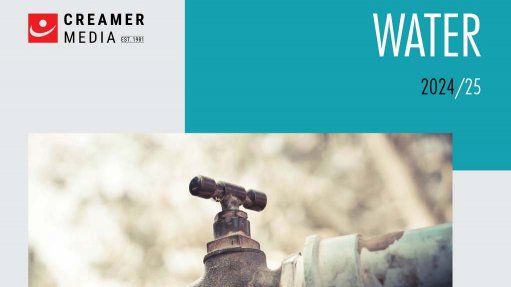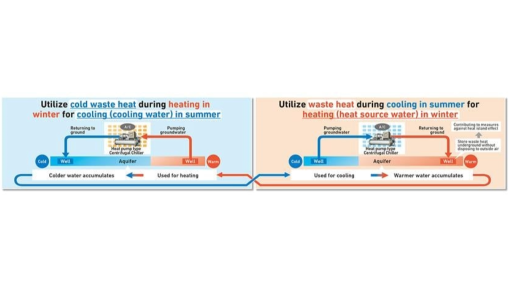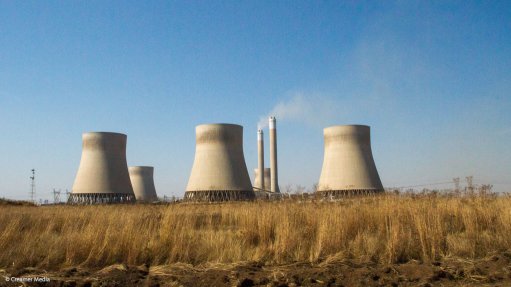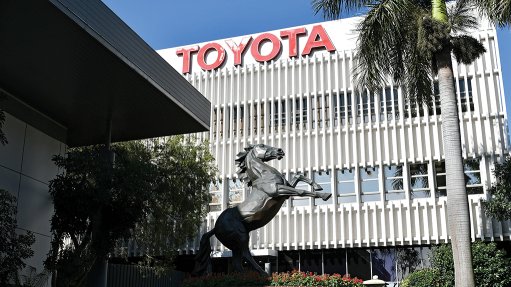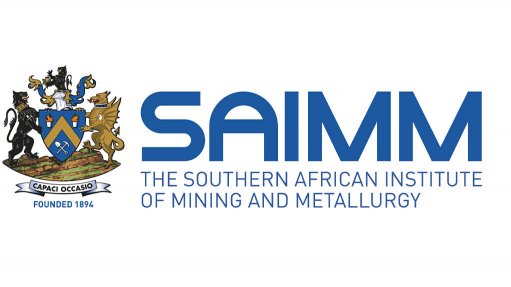Fire safety should be at the heart of your business – a complete guide
This article has been supplied and will be available for a limited time only on this website.
A fire can have disastrous effects on your business, causing both immediate and long-term consequences that extend far beyond the physical damage. Karen Rimmer, Head of Distribution at PSG Insure emphasises that, in the wake of a fire, you may experience the loss of inventory, equipment and critical infrastructure, halting operations and potentially leading to significant financial loss or even worse, loss of lives.
“To prevent fire ignition and mitigate fire spread, we recommend that the following general fire safety measures are considered,” says Rimmer. “It should be noted that these measures do not replace any fire mitigation requirements as set out by the insurer policy terms, conditions or provisions and/or bylaws of the country.”
Plan ahead
Preparedness is critical in preventing fire-related accidents and ensuring quick and efficient responses in the event of a fire. Rimmer advises on the following steps:
- Risk assessments – Most insurer’s conduct risk assessments to assist clients to determine which measures should be taken to reduce the risk of fire. This is usually done at the inception of the policy and with intervals determined by the insurer typically at renewal of the policy.
- Business continuity plan: Develop a written emergency fire plan that includes evacuation routes, assembly points and roles for employees in case of an emergency.
- Training: Ensure all employees are trained in fire safety procedures, including how to use fire extinguishers, how to evacuate, and how to alert emergency services. A minimum number of personnel should be identified and trained to use fire extinguishers. FPASA (Fire Protection Association of South Africa – www.fpasa.co.za) should be consulted to establish the requirement.
- Regular drills: Conduct fire drills to ensure everyone is familiar with emergency procedures.
- Emergency contacts: Clearly display emergency contact information, including the fire department, on visible locations throughout the workplace
Fire safety
Fire safety practices ensure the safety of your employees, assets and the building structure. Rimmer emphasises that prevention is far more effective than relying on response measures alone and provides fire safety tips practices:
- Smoking: Strict controls to be enforced with designated smoking areas.
- Electrical Safety: Regularly check electrical wiring and outlets for wear and tear. Overloaded circuits or faulty equipment are major fire hazards. An electrical Certificate of Compliance (CoC) must be issued by a registered person and kept on record.
- Cooking: A fire blanket or portable fire extinguisher should be kept close to heat and ignition sources.
- Kitchen extraction systems: Systems should be inspected and cleaned according to the manufacturer’s specifications by a certified company within the prescribed intervals according to use. A certificate confirming the date of inspection or cleaning must be kept on record.
- Potentially hazardous substances (flammable gasses, liquids, solids, explosives, toxic substances or acids): Inspection and certification by the local fire brigade is a requirement and must be renewed annually.
- Flammable liquids: Quantities to be limited in the working area to one day’s use, and to be stored in a separate storage area away from other dangerous substances that may compromise the integrity of the containers used.
- Flammable or non-flammable gas: Cylinders to be stored in a clearly identified, dry, well-ventilated storage area away from doorways, aisles, stairs, elevators, heat sources and potential fire hazards.
- Dust and fume extraction systems: Systems should be inspected and cleaned according to the manufacturer’s specifications.
- Manage and control all hot works (welding, grinding and any work that generates sparks or heat): Review hot work procedures and training to ensure that where required in terms of the permit, a fire watch is provided. A hot work permit process should be put into place.
- Spray painting: Inspection and certification by the local fire brigade is a requirement and must be renewed annually.
- Vessels under pressure (boilers etc): Registration and testing certificate issued in terms of The Occupational Health and Safety Act is a requirement.
Housekeeping
Proper housekeeping prevents the accumulation of combustible materials and maintains safe and clear spaces for both operations and evacuation routes. Rimmer shares the following tips:
- Clutter-free workspace: Keep work areas, storage spaces and hallways free from unnecessary items. Clutter can obstruct fire exits and increase fire risks.
- Waste disposal: Dispose of flammable materials such as paper, oily rags and chemicals promptly. Ensure that all waste is kept in proper containers and regularly removed from the premises.
- Spills and leaks: Promptly clean up any fuel, oil, or chemical spills to avoid fire hazards. Ensure proper procedures are followed for hazardous materials.
- Clean ventilation systems: Regularly maintain heating, ventilation and air-conditioning systems to prevent the buildup of flammable dust, dirt, or grease that could ignite.
Storage and stacking
“Improper storage and stacking of materials can create fire hazards, block escape routes, and hinder firefighting efforts. Safe storage practices minimise these risks,” she emphasises.
- Proper storage of flammable materials: Store flammable liquids, gases and chemicals in approved, fire-resistant containers and in well-ventilated areas. Gas cylinders and flammable liquids should be limited within the production areas to only the amounts needed for the day’s work.
- Fire loads: To be reduced within the production and storage areas to an absolute minimum.
- Safe stacking of goods: Stack materials in a way that prevents them from toppling or blocking exits. Ensure that items do not obstruct fire safety equipment. Stacking heights must not exceed the sprinkler design specifications. Where rack stacking is conducted, ensure all flue spaces are kept open - storage must be arranged without obstructing sprinkler heads or automatic fire detectors.Where there is no sprinkler system installed, stacking heights should not exceed 3 metres.
- Labelling: Clearly label hazardous materials with appropriate warning symbols and keep Material Safety Data Sheets (MSDS) accessible for employees.
- Temperature control: Ensure that combustible materials are stored away from heat sources and that temperature-sensitive materials are stored in temperature-controlled areas.
Fire panels and detection systems
- Fire detection systems help detect fires early, enabling faster response times and potentially preventing extensive damage. Rimmer shares some fire detection systems to consider:
- Fire detection: Ensure the system is installed in all rooms, hallways and high-risk areas. Regularly test and maintain the system to ensure it functions properly. The system must be connected directly to the fire brigade or a 24-hour manned control room.
- Heat detectors: In areas with high dust, humidity, or airflow (such as kitchens or warehouses), heat detectors may be more effective than smoke detectors.
- Fire panels: Fire control panels should be centrally located, easily accessible and regularly inspected. The fire panel should display real-time status and provide diagnostic information for troubleshooting.
- Fire extinguishers: Must be adequately provided, serviced and maintained with clear signposting and access.
- Automatic sprinkler systems: Install sprinklers in high-risk areas. These systems should be regularly tested and maintained. A certificate of compliance should be issued annually by ASIB (Automatic Sprinkler Inspection Bureau (Pty) Ltd).
Maintenance
Premises that are overgrown with grass, weeds, shrubs or trees present a fire risk. Fire breaks on farms and plots will help to limit the spread of fires. Rimmer emphasises the importance of maintenance below:
- Garden maintenance: All combustible material and vegetation within 5 metres of the insured buildings or structure should be cleared and removed. Trees and shrubs that can spread a fire into the building or onto the roof must be cut and pruned to remove the fire risk. These trees and shrubs should be at least 2.5 metres away from any structure or roof (5 metres if the wall or roof construction is made of thatch or timber).
- Fire breaks: On plots and farms, fire breaks help to limit the spread of fires. You must comply with the National Veld and Forest Act, which governs regulations for the spread of veldfires.
Key take aways
- Review and update regularly: Regularly review your fire safety measures and update them as necessary, especially when changes in operations, personnel, or building layout occur.
- Compliance with regulations: Ensure compliance with local fire safety laws and regulations to avoid fines or legal liabilities.
“By considering these key areas—being prepared, adhering to fire safety practices, maintaining good housekeeping, implementing proper storage and stacking techniques; and investing in fire panels and detection systems, you can significantly reduce the risk of fire and ensure the safety of employees and assets,” Rimmer emphasises.
She concludes – “please speak to your adviser should you have any questions related to the cover provided in terms of your policy.”
Comments
Press Office
Announcements
What's On
Subscribe to improve your user experience...
Option 1 (equivalent of R125 a month):
Receive a weekly copy of Creamer Media's Engineering News & Mining Weekly magazine
(print copy for those in South Africa and e-magazine for those outside of South Africa)
Receive daily email newsletters
Access to full search results
Access archive of magazine back copies
Access to Projects in Progress
Access to ONE Research Report of your choice in PDF format
Option 2 (equivalent of R375 a month):
All benefits from Option 1
PLUS
Access to Creamer Media's Research Channel Africa for ALL Research Reports, in PDF format, on various industrial and mining sectors
including Electricity; Water; Energy Transition; Hydrogen; Roads, Rail and Ports; Coal; Gold; Platinum; Battery Metals; etc.
Already a subscriber?
Forgotten your password?
Receive weekly copy of Creamer Media's Engineering News & Mining Weekly magazine (print copy for those in South Africa and e-magazine for those outside of South Africa)
➕
Recieve daily email newsletters
➕
Access to full search results
➕
Access archive of magazine back copies
➕
Access to Projects in Progress
➕
Access to ONE Research Report of your choice in PDF format
RESEARCH CHANNEL AFRICA
R4500 (equivalent of R375 a month)
SUBSCRIBEAll benefits from Option 1
➕
Access to Creamer Media's Research Channel Africa for ALL Research Reports on various industrial and mining sectors, in PDF format, including on:
Electricity
➕
Water
➕
Energy Transition
➕
Hydrogen
➕
Roads, Rail and Ports
➕
Coal
➕
Gold
➕
Platinum
➕
Battery Metals
➕
etc.
Receive all benefits from Option 1 or Option 2 delivered to numerous people at your company
➕
Multiple User names and Passwords for simultaneous log-ins
➕
Intranet integration access to all in your organisation




